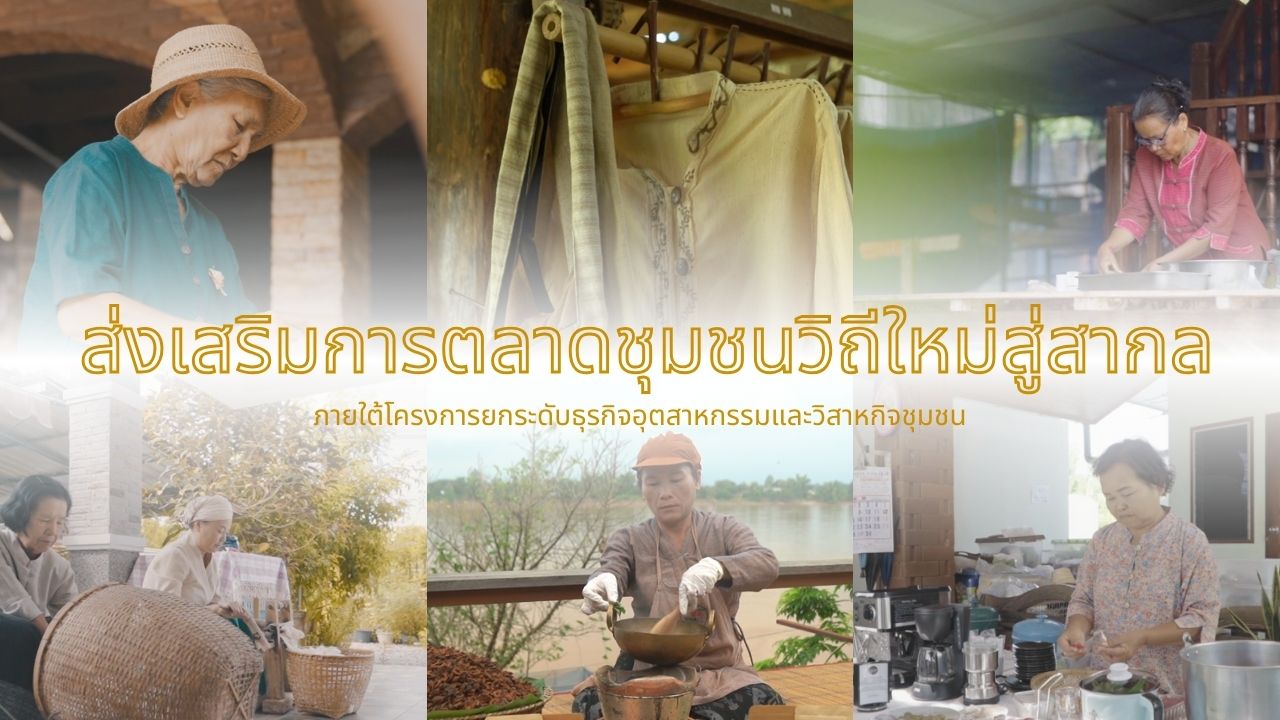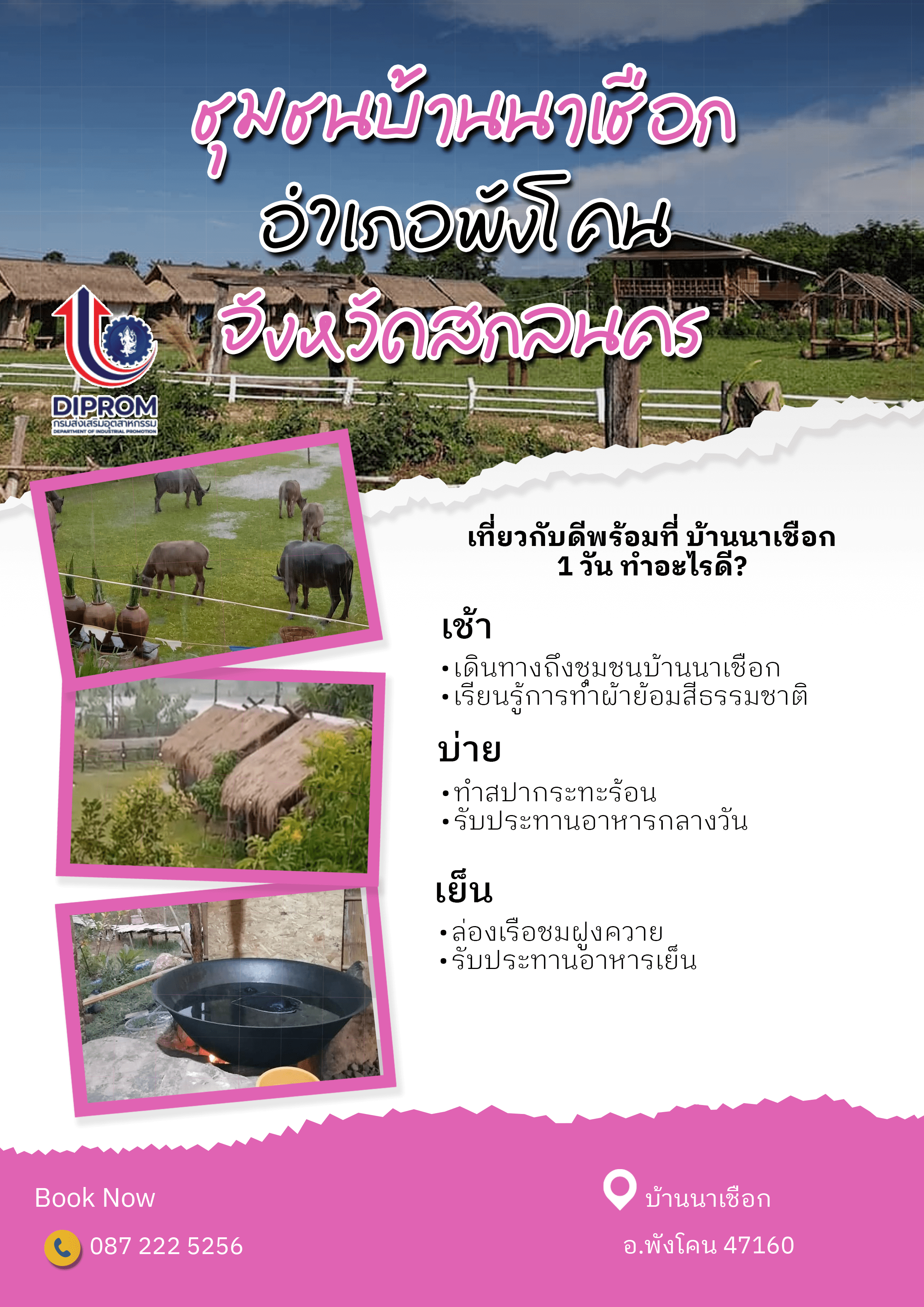Ban-Naa-Cheuk Village community in Phang Khon District, Sakon Nakhon Province
Welcome to the Ban-Naa-Cheuk Village community in Phang Khon District, Sakon Nakhon Province. This is one of the fascinating tourist destinations and cultural heritages of Thailand. Here, you will discover handwoven buffalo-dyed fabrics with beautiful and vibrant patterns. Buffalo-dyed fabrics are unique, traditional handwoven textiles that are popular both locally and internationally.
The buffalo-dyed fabrics produced in the Ban-Naa-Cheuk Village community are truly unique because of their natural dyeing process using materials from buffalo dung. This process creates vivid and beautiful colors that you won’t find elsewhere. You can choose from a variety of products made from buffalo-dyed fabrics, such as artistic clothing, beautiful jewelry, or charming home decor items. Additionally, there are many other products available, including scarves, shawls, tablecloths, and bedspreads, allowing you to enrich your home or wardrobe with culturally significant items.
Apart from buffalo-dyed fabrics, the Ban-Naa-Cheuk Village community also offers other intriguing local products. These products have the potential to be developed into internationally appealing goods, such as medicinal herbs known for their health benefits, herbal supplements, and spa products.
Don’t forget to immerse yourself in the exciting tourism experiences that Ban-Naa-Cheuk Village has to offer. You can enjoy the breathtaking beauty of the nearby small Phu Pan mountain, visit the Ubon Dam, and explore other attractions that will allow you to get up close and personal with the local way of life and culture.
When you visit Ban-Naa-Cheuk Village, take the opportunity to enjoy the products and experiences available here. Your visit will also contribute to supporting the local community.
One-Day Travel Activities Ban-Naa-Cheuk Village, Phang Khon District, Sakon Nakhon Province
Morning
- Travel to Ban-Naa-Cheuk Village, Phang Khon District, Sakon Nakhon Province..
- Learn about the natural dyeing of fabrics with buffalo dung.
Afternoon
- Hot pot spa experience.
- Enjoy lunch.
Evening
- Boat tour to observe water buffalo herds.
- Have dinner.
Activity Details
Learn about the Natural Dyeing of Fabrics with Natural Ingredients:
Ban-Naa-Cheuk Village is renowned for its natural dyeing of fabrics. Tourists can learn how to dye fabrics using natural ingredients such as flowers, krang (a local plant), and red dye from mulberries.
Boat Tour to Observe Buffalo island:
Tourists can take a boat tour to observe ten of buffalos on Buffalo Island near the Ubon Dam. This experience allows you to witness the local way of life, including buffalo rearing and the use of buffalo dung for fabric dyeing.
Hot Pot Spa Experience:
Tourists can enjoy a hot pot spa experience, a traditional method of body rejuvenation using the heat from a hot pot. This helps improve blood circulation and relaxes muscles. It is combined with traditional Thai massage and features special herbs from the Ban-Naa-Cheuk Village community.
Watch a Traditional Village Performance:
Ban-Naa-Cheuk Village’s traditional village performance showcases the culture and traditions of the community. You can watch performances like folk dances, traditional weaving demonstrations, and more.
Noted:
- It is recommended to wear comfortable clothing and shoes.
- Don’t forget to wear a hat, sunglasses, and sunscreen to protect yourself from the sun.
- Be cautious while walking on boats.
Ban-Naa-Cheuk Village is a cultural tourism community known for its unique way of life and local wisdom. The diverse tourist activities in this community promote cultural tourism and the sustainable economic development of the area.
Additional Activities:
In addition to the mentioned main activities, tourists can also choose from various additional activities based on their interests, such as:
- Visiting an herbal garden.
- Exploring traditional houses.
- Tasting local cuisine.
Ban-Naa-Cheuk Village warmly welcomes all tourists to come and experience its local way of life and cultural heritage.







